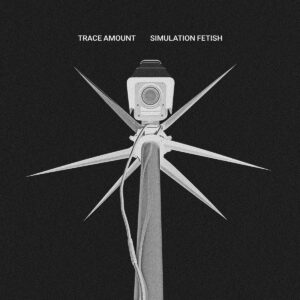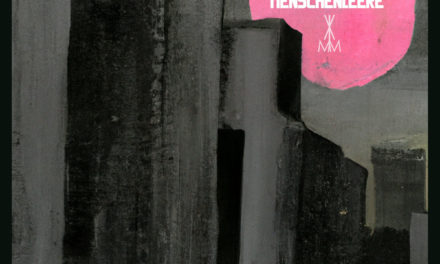
Flint Glass & Ah Cama-Sotz
Wakan Tanka
Ant-Zen
Wakan Tanka is not Gwenn Trémorin of Flint Glass’ first intra-Ant-Zen collaboration, not by a long shot, but it’s not even his first side project to take up American indigenous myth and culture as its focus. Unlike the Tzolk’in collaboration with Nicolas Van Meirhaeghe of Empusae, Trémorin is joined by industrial/dark ambient vet Herman Klapholz of Ah Cama-Sotz on this LP, which finds common ground between both producers’ familiarity with rhythmic noise, downtempo, and dark ambient. While almost all of the tracks have some rhythmic drive (save for the closing ambiance of “nuu-chah-nulth”), not only are the beats kept to the mid-tempos, but they’re often oriented towards internal counterpoint and blending rhythmic timbre with programming rather than on the steady crunch we might expect from either producer’s more down the line material. The penultimate “odawa” is an excellent example of the various styles weaving together, with purely electronic programming underpinning big string washes and a range of drums. The line between homage and cultural appropriation can be a bit tricky to draw in cases like these; the press copy situates Wakan Tanka as being inspired by the ongoing resilience of indigenous people in the Americas, and the record certainly doesn’t fall into the more obvious musical cues which have been used to stereotype indigenous culture in the past, but this is a judgment best left to those to whom Trémorin and Klapholz are endeavouring to pay tribute.

Trace Amount
Simulation Fetish
self released
Brooklyn industrial project Trace Amount favours the noisier, more chaotic style of the genre, although that shouldn’t be conflated with being purely chaotic: the tracks on new EP Simulation Fetish feel both deliberate and considered. Aided by a mix from Rhys Fulber and some pre-production work from Statiqbloom’s Fade Kainer, Brandon Gallagher’s material is sharp-edged and frequently ugly, but also rendered with a careful touch to make sure none of its shredded metallic detail is lost. Note how on the title track where Gallagher yells himself raw, the blasts of static percussion and reverbed drones that surround him have distinct boundaries and space within its structure that are anything but blurry or indistinct. Or how opener “Living Accessory” has dials in the reverb on each drum hit so that it can fill out the song’s drainpipe interior, but be out of the way by the time the next impact lands. Even the bedlam of “M3T4PR1S0N3R” feels calculated, with its tumbling vocals and swells of woozy synthetic noise corralled by metallic snare hits that impose order. Chaos is rarely this intentional.





